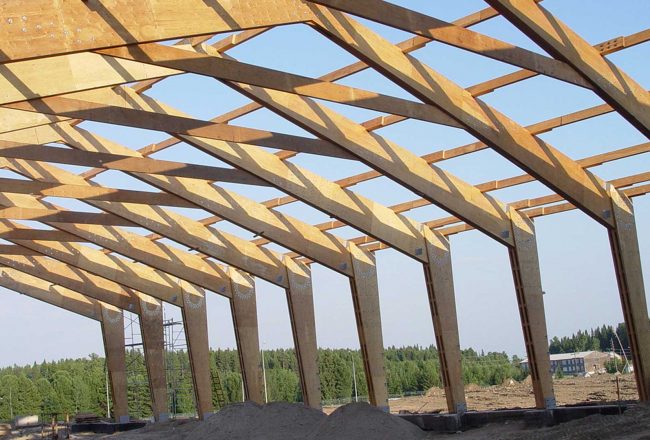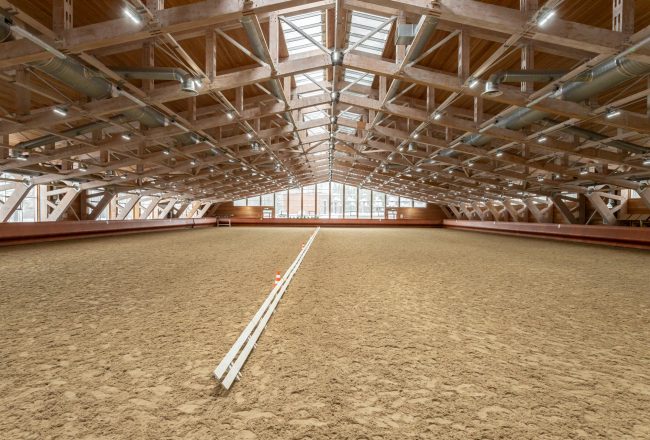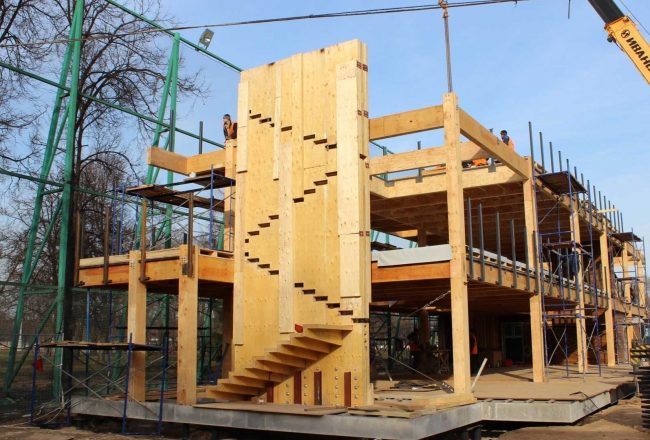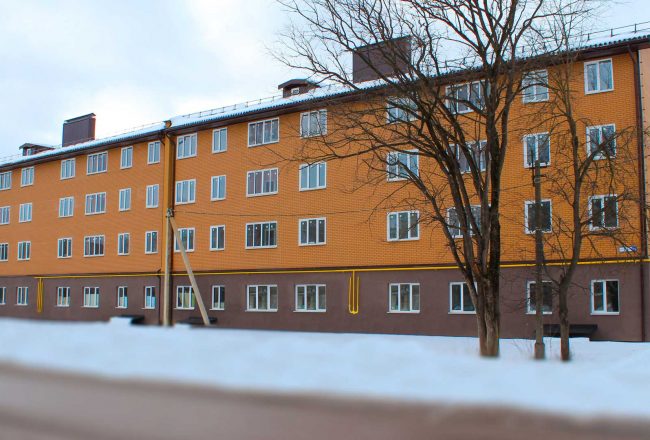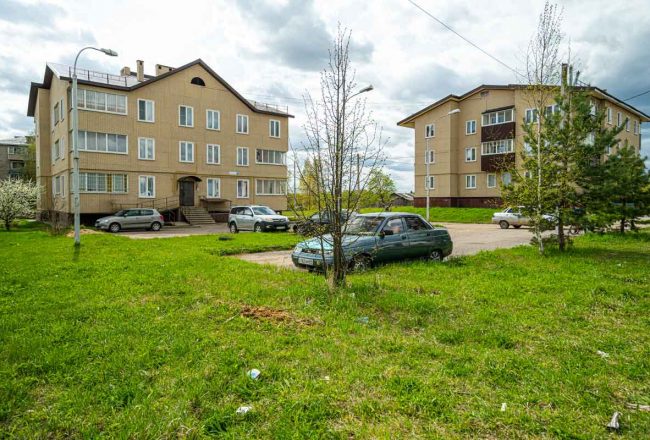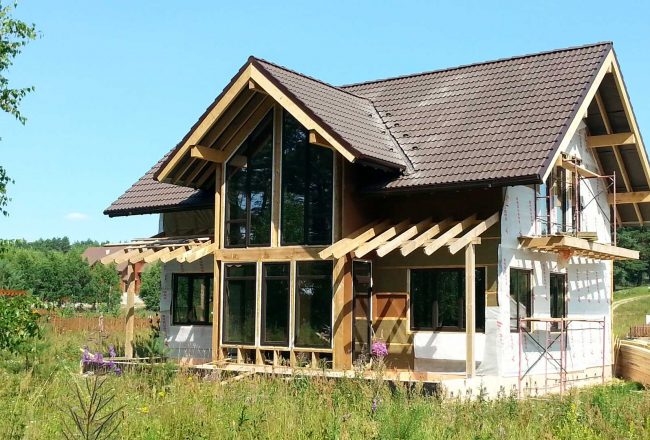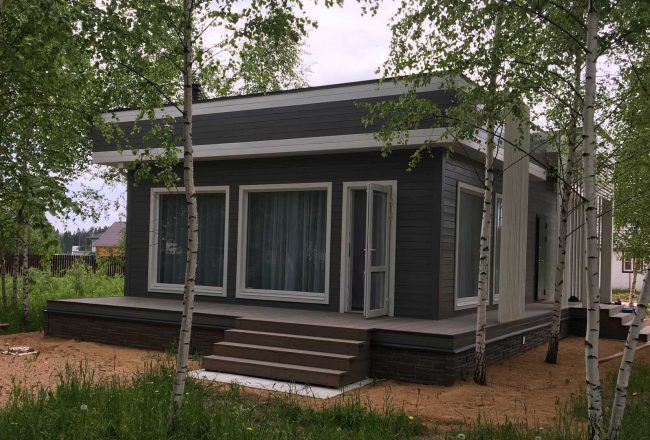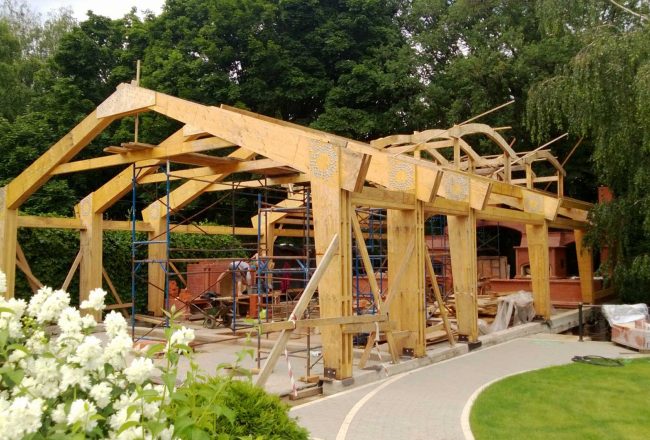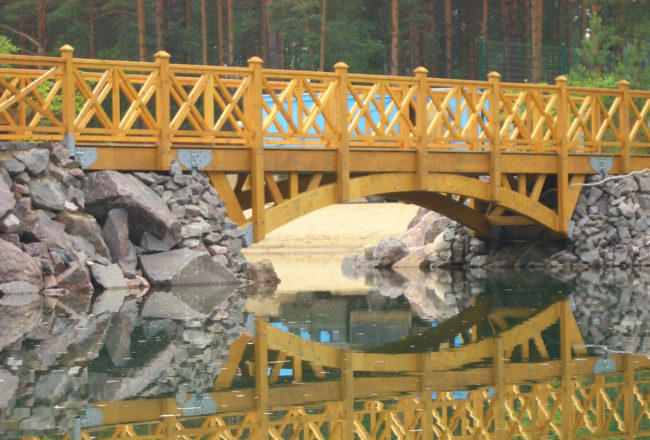Laminated veneer lumber (LVL) Ultralam™
Laminated veneer timber (LVL timber) Ultralam™ is a high–strength composite structural material. It is an innovative product of deep wood processing, obtained by gluing sheets of unidirectional peeled veneer of coniferous species. LVL Ultralam™ timber is manufactured at the Terra plant located in Torzhok, Tver region.
LVL products were invented in the USA in the 1930s. This material was used to produce airplane propellers and other high-strength aircraft components during World War II. In the 1970s, the founders of Trust House International began using parallel glued veneer layers to form building I-beams, floor beams, and trusses.
Today, LVL timber is widely used in the countries of North America and Western Europe in the construction of large-span structures, frame house construction, etc. Experts value LVL timber for its structural and mounting properties, calling it a “supertree”.
LVL laminated timber production technology allows to reduce the negative impact of natural defects of wood, significantly increases the levels of its strength indicators. More information about Ultralam™ LVL timber production technology can be found from this video.
The shipment of LVL Ultralam™ timber is carried out from the finished product warehouse on the territory of the Terra plant, equipped with overhead cranes with a lifting capacity of 15 tons and forklifts.



